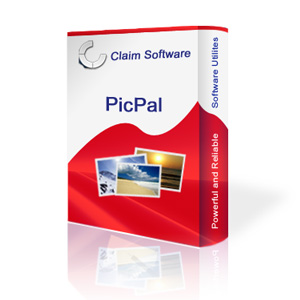
The digital camera has quickly become a vital tool for insurance Claims adjusters. However, with the potential for hundreds of photos per Insurance Claim, managing all of those photos is a challenge. Insurance Claim Software PicPal makes it a snap to manage photos without affecting the original files. Use this easy-to-use picture management utility to:
1. Select an entire folder of pictures and reduce each digital picture’s file size – all at one time. This function offers three popular file sizes that you can choose from. Once reduced, the reduced files are stored in a sub-folder residing inside the original folder. All original images remain intact and unchanged.
2. Zip photos into separate zipped folders. It’s not uncommon for emails with multiple attachments and large file sizes to be blocked by ISPs and antivirus products. By zipping individual photos into a separate compressed folder, you’ll be able to email the zipped folder with confidence. Not only will the overall file size be a mere fraction of the original, your recipient will only need to deal with one attachment in order to view and save the photos.
3. Rename multiple photos at once. Rather than accepting the digital camera’s default naming system, rename your Insurance Claims photos by client name and avoid confusion. PicPal makes it easy to rename ALL of the files residing within a single folder at one time. For example, if you have a folder containing 250 pictures related to a Insurance Claim for Bill Jones, use PicPal to mass rename each digital photo file. Simply enter ″Bill Jones″ into PicPal’s renaming feature and PicPal will rename the photos in sequence. Your files would then be named BillJones1, BillJones2, BillJones3, and so on.
4. Remove metadata from photo files without affecting the original file. Digital photo files contain hidden data known as ″metadata″ or ″exif data″. This hidden information contains details such as the date the photo was taken, the type of camera used, dimensions, F-stop, and so on. PicPal automatically removes this metadata when processing files, which allows for smaller file sizes. The original files are not affected.
5. Create a PDF document containing all of the photos found in a specific folder, complete with their descriptive filenames as labels. Choose the number of photos to display per page and decide whether or not to label each photo with its filename. Once created, you can share the PDF with others and refer to specific photos by their filenames. For example, if you send an insurance company a PDF detailing the Bill Jones Insurance Claim, you can refer to specific files in email messages or phone calls such as, ″Refer to the photo labeled ’BillJones23’ and you’ll see the waterline on the wallpaper″.
PicPal is super easy to use. Watch the video below and see PicPal in action:
Turn up the computer volume
Other ClaimSoftware Solutions
» Iscope
Claim Software® ©2009








